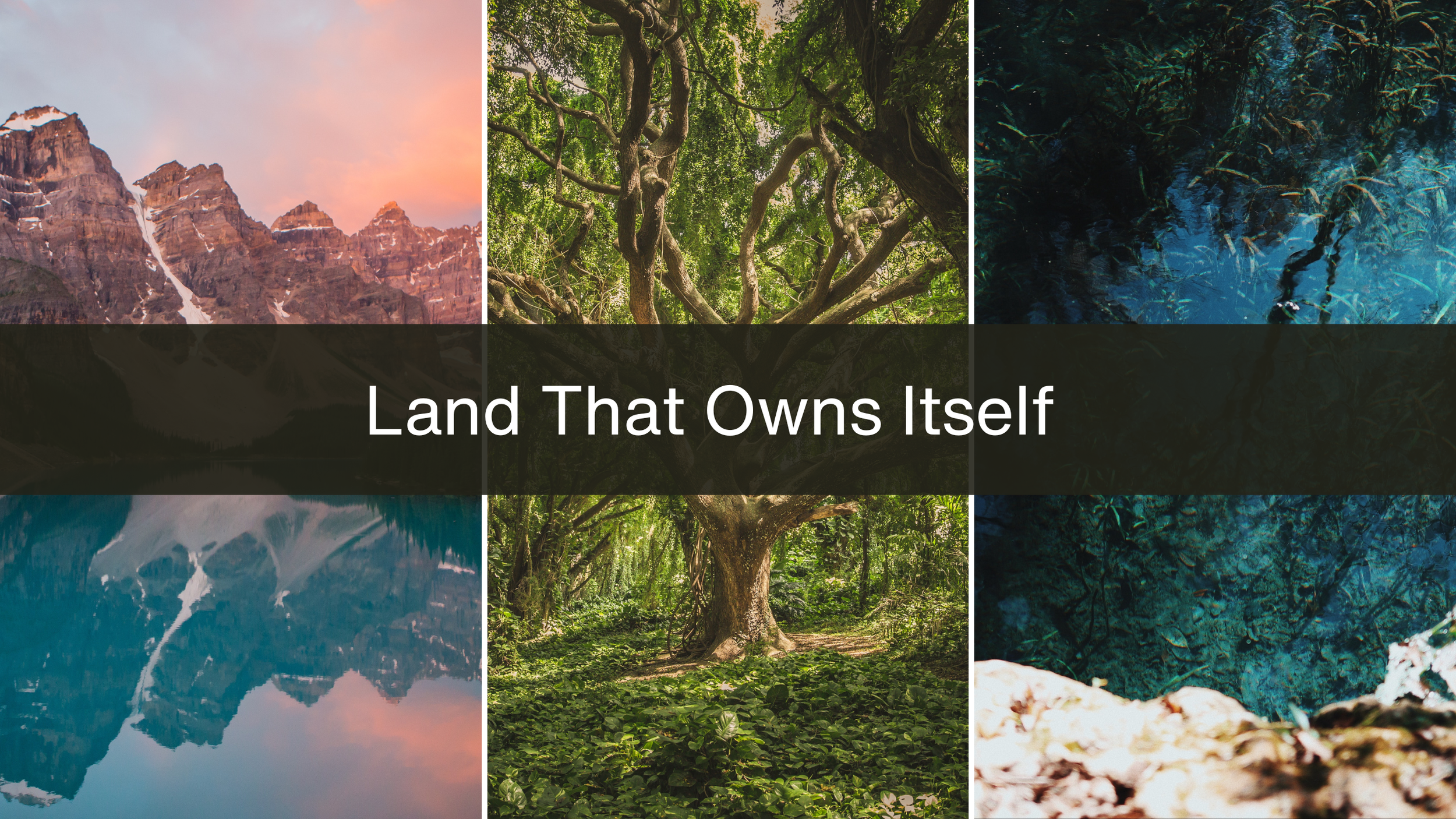
The Center for Democratic and Environmental Rights (CDER) has launched its Land That Owns Itself Program.
This program is focused on transforming nature from human property to self-ownership and self-governance, separate from human interference and control. We have now assisted landowners in the United States to secure self-ownership for their land.
In June 2025, the first mountain in the U.S. was recognized as self-owning. CDER, along with our Sacred Contract partners, worked on this project. Learn more here.
As we face growing global environmental crises, we need to examine and acknowledge how humankind has ripped holes in the very fabric of life – bringing about the Sixth Great Extinction event on Earth, ecosystem collapse, and climate change – how we have disrupted the natural systems of our home planet through human action.
CDER has long worked to address the systemic reasons for this, focusing on how humankind governs itself toward nature, and how nature itself is treated under law – as a thing, a commodity, a resource, existing for human use.
CDER’s co-founder, Thomas Linzey, wrote the first law in the world which transformed nature from being treated as a thing, to being recognized as a living entity with legal rights of its own.
This pioneering work has led to a seismic shift in environmental law – with communities, First Nations, Tribal Nations, courts, and even countries now recognizing nature as possessing legal rights – the highest form of legal protection in written law.
The Land That Owns Itself Program builds on this change, taking that next big systemic leap, such that nature is not only protected with legal rights, but is moved out from under human control and ownership, to become self-owned. and self-governed.
The Need for Land That Owns Itself
How did we get to this place, facing overlapping environmental crises? Consider that today’s property frameworks treat nature as a commodity, as a “natural resource,” as something to be owned and exploited.
Environmental laws and policies regulate and permit certain uses of nature – how much a river can be polluted, how many fish can be harvested from the sea, how much water can be used and contaminated at each frack well. These laws and policies consider nature to be a “natural resource” that must be “managed.”
Human development and industrialization of agriculture, energy, fossil fuel extraction, and other sectors, authorized by environmental laws, have caused global impacts. Today, we face overlapping environmental crises, from soaring species extinction rates, to the collapse of coral reefs and other ecosystems, and accelerating climate change.
From Recognizing the Rights of Nature to the Self-Ownership of Nature
A fundamental shift in humankind’s relationship with the natural world is needed, both in how we govern ourselves toward nature and how nature itself is treated under the law.
CDER founders’ pioneering work on rights of nature has catalyzed change in the legal status of nature, from being property – without even the most basic right to exist – to nature being recognized as a living entity with legal rights. This has meant that in Ecuador, the U.S., Canada, Panama, Bolivia, and other countries, laws and court rulings have moved nature into the realm of a rights-holder, with such rights as the right to exist, regenerate, evolve, and be restored.
This represents a fundamental legal and cultural shift, acknowledging that humankind not only depends on nature, but is part of nature. And with that understanding, that harm done to nature is harm done to ourselves.
This shift is most evidenced in Ecuador, where in 2008, CDER’s founders assisted in the drafting of the country’s rights of nature constitutional provisions, the first country to enshrine such rights. In 2021, Ecuador’s Constitutional Court ruled in the Los Cedros case that the protection of fragile ecosystems and at-risk species was a constitutionally guaranteed right which was constitutionally elevated over the right of corporations to mine. Indeed, while recognizing that mining itself is a protected industry within Ecuador’s Constitution, the Court found that the rights of nature provisions overrode those mining protections. The Court’s ruling is a major milestone for the rights of nature – and represents the shift in how nature is protected by the law – in a country long-dominated by extractive industries.
Land that Owns Itself Program
CDER began the Land That Owns Itself Program to build on our work on the rights of nature.
For the many Indigenous peoples that we partner with, the rights of nature reflects a return to the relationship that they have had with the natural world since time immemorial – in which nature is considered a relative, the Creator, to be both respected and protected. As part of that cosmovision, nature is considered autonomous, neither owned nor controlled by humans.
The Land That Owns Itself Program builds upon these concepts so deeply entwined within Indigenous cultures – that nature is deserving of protection unto itself, and, that nature is deserving of the authority to own and govern itself.
Under this program, CDER is working with owners of land in the United States and elsewhere to transform it from human property to being self-owned by nature. This further builds on our work with both securing the rights of nature in law and the development of rights of nature easements, in which owners of property have secured the rights of ecosystems and species in perpetuity through conservation-type easements.
Where rights of nature laws transform nature from being considered a thing – property, without legal rights – to being recognized as a living being with legal rights, CDER’s pioneering work through the Land that Owns Itself Program takes the next big leap in protecting nature, such that nature possesses the authority to self-govern and be self-owned.
If you wish to learn more about how you can make this change, please contact us at info@centerforenvironmentalrights.org.



